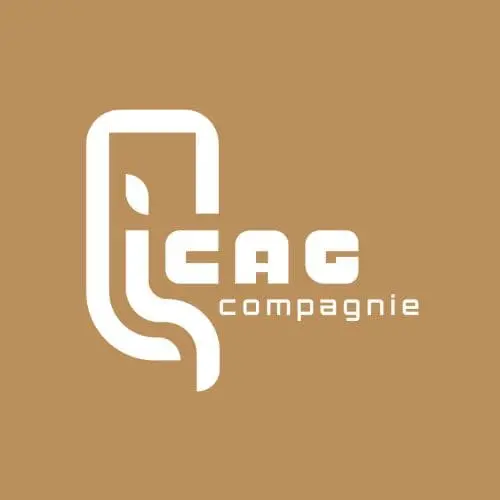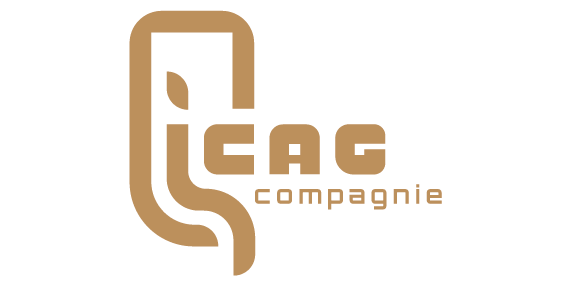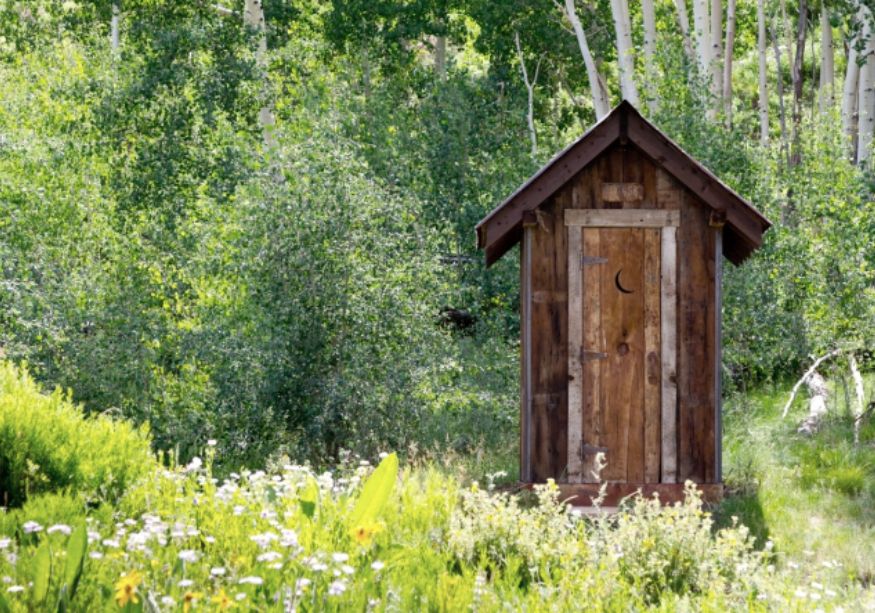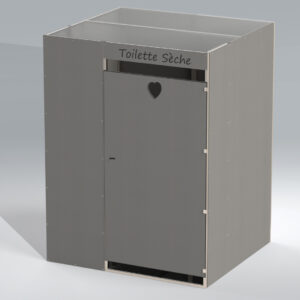Dry toilets have evolved over time! So, from smelly cabins, they have become comfortable and easy to use.
What type of ecological dry toilets are there?
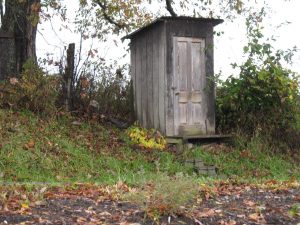
I remember when I was a child, my grandparents had an outdoor toilet at the bottom of their garden. I had to be really desperate to use it. It was a simple pit, a wooden platform with a hole, a nauseating odor, and through that hole, a terrifying view of tailless maggots (larvae of the Eristale fly) that scared me to death… but I feel like I’m spoiling your appetite. Let’s continue…
The waste was transported using a pole with a pot attached to the end. It impregnated the compost with garden waste, which composted until the next gardening season. This produced surprisingly large vegetables.
But this practice is now a thing of the past. Such facilities cannot be called eco-friendly toilets.
Eco-friendly dry toilets can be defined as follows:
• No water is used for waste evacuation.
• The receptacle is watertight.
• Hygienic conditions for the user are maintained.
• Waste is treated without using water.
• Processed materials are returned to the earth.
In the 1970s and 1980s, during the era of hippies, of which I was a part, toilets were not always present in the rural homes we occupied.
Inspired by Scandinavian countries but simplified, our eco-friendly dry toilets consisted of a 100-liter container, a wooden lid with a hole for seating, and a sprinkle of sawdust with each use. Installed outdoors, they allowed us to meditate in the morning sun…
We had reinvented litter-based dry toilets at minimal cost!
No odor, no water, no sanitation, just basic composting.
These eco-friendly dry toilets have improved over time.
Here are the various categories of eco-friendly toilets as we can categorize them today:
Litter-Based Dry Toilets (LBDT):
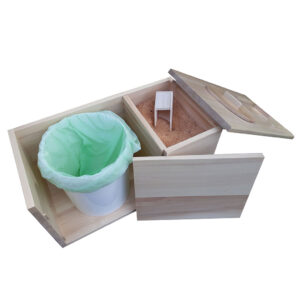
The simplest and most commonly used type, recognized by law. You can find them in stores or from artisans like us. They can also be DIY projects, either simple or more sophisticated, depending on your choice and DIY skills.
For this, you need a container, a seating area, carbonaceous material (sawdust or similar), an outdoor composting area, and, of course, a composter. Both feces and urine go into the same receptacle.
A variation of litter-based dry toilets, called separating dry toilets, involves separating solid waste from urine. Solid waste and litter go to compost, while urine is stored in a container and joins greywater for treatment. In our opinion, this system does not offer significant advantages—it reduces the weight in the container, extends the emptying period, and can lead to odors when the two components are separated, urine and feces.
It also presents more obvious disadvantages, such as the need for a separate urine evacuation, less effective composting due to the absence of nitrogen from urine, and the complexity of setting up a separation system in dry toilets, which leads to more complicated cleaning.
Lombricomposting Toilets:
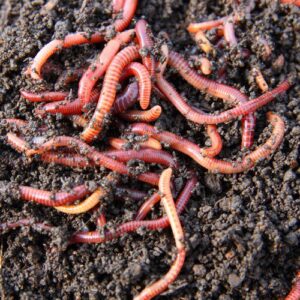
Ces toilettes sèches écologiques fonctionnent de la même façon que les wc écologiques à compost. La différence, réside dans le processus de traitement des déchets.
These eco-friendly dry toilets work similarly to composting toilets but differ in the waste treatment process. Feces and urine fall into a lower tank that requires a specific installation. Sometimes a high-pressure microflush facilitates the disposal of excreta when the tank is far from the toilet. Solid waste and liquid leachate are separated in the tank.
The system relies on composting worms in the solid waste, which digest the materials, reducing their volume significantly. Liquid leachate is dried out through ventilation of the tank. These toilets require less frequent emptying, with maintenance every 5 to 10 years depending on usage.
The major drawback lies in the installation, as it needs to be planned during home construction. However, simpler lombricomposting dry toilets can be installed outdoors, taking advantage of the terrain’s slope. This system remains costly, and its operation is delicate. Don’t forget that you need to manage the creatures that do the work in the tank.
Dehydration Toilets:
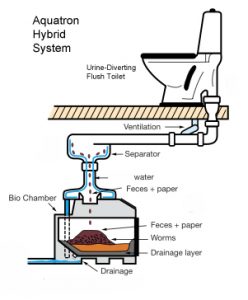
Similarly, these toilets consist of a seating area, a lower tank, and no sawdust. Solid waste and leachate (urine soiled by contact with feces) are separated, either at the source or through a grill. Using various systems, including ventilation or convection, the solid waste is partially dehydrated. Feces lose much of their weight—about 90% water—become weakly odorous, and less contaminating.
However, in most cases, these dehydration dry toilets require the tank to be buried. During maintenance, solid waste must be composted, which can be problematic due to the volume of material. It requires large composters, a sealed composting area, and significant handling. Urine dispersal in France is regulated by a European standard for agricultural nitrogen distribution. It would take a garden of 250m2 per person to handle urine production, as indicated in an excellent article by EAUTARCIE.
Solid and liquid waste can also be collected by a vacuum truck (the company that empties septic tanks) and joined with traditional sanitation systems. In this case, dry toilets are mainly for practical purposes, as there are no sewer systems and there is heavy usage. There is little ecological benefit in this situation.
These dehydration toilets are costly due to their technology and are only useful in high-traffic areas and places where other systems are difficult to install.
Lastly, the eco-friendly and magical dry toilet:
• Of course, it has a seating area and nothing below!
• Feces and urine are disintegrated upon expulsion by a magical ray that we keep a secret!
• No emptying, no maintenance, no odor.
• Pure bliss, in a way…
Of course, I’m joking! In conclusion, there are many eco-friendly toilet systems with variations, and everyone needs to find what suits them best. None of them waste water, but they differ in terms of waste management. The price of dry toilets varies from a few euros for the most basic models to several thousand euros for the most sophisticated ones.
Before installing eco-friendly toilets, you should think carefully, but environmental considerations should be your guiding factor. Think about future generations and protect the planet!
